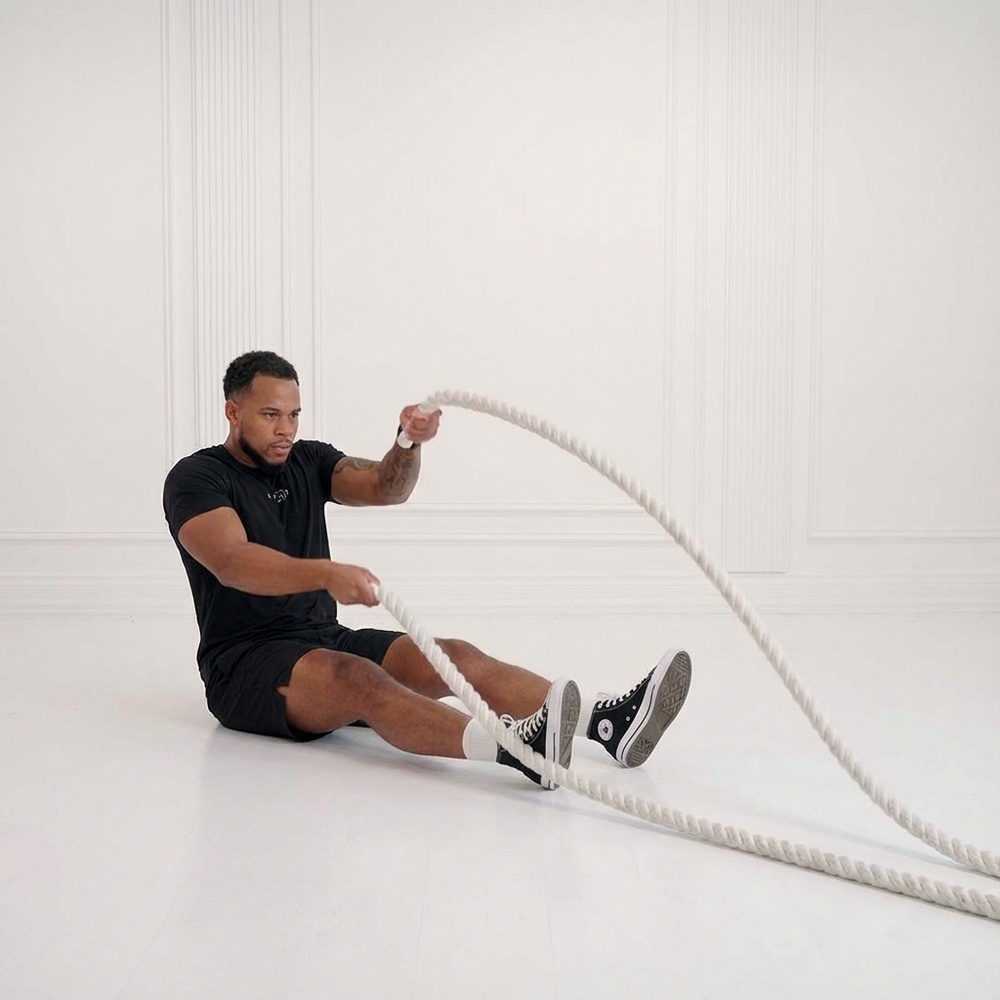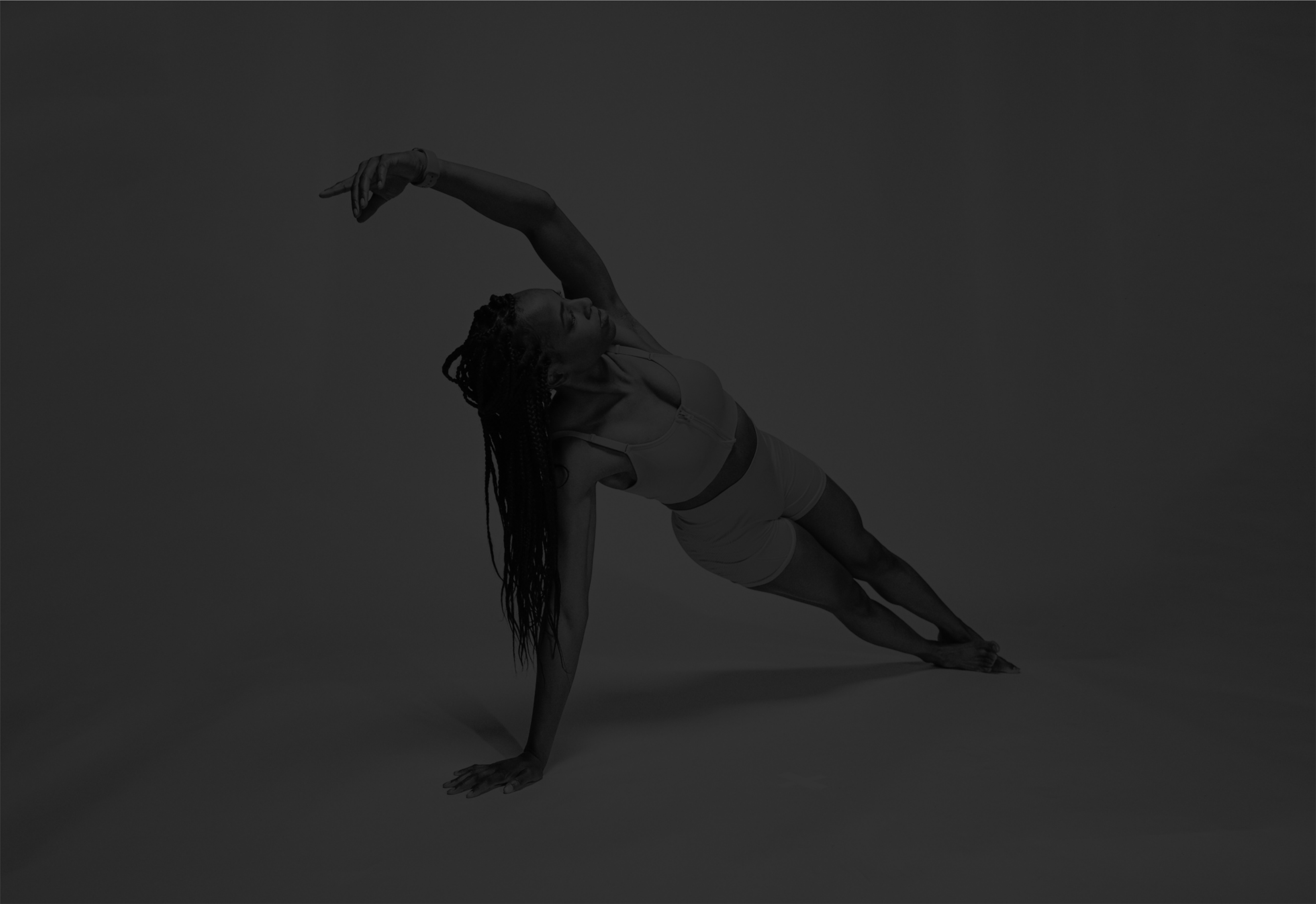Battle Ropes
 Auto Detected
Auto DetectedThick anchored ropes you wave or slam for full-body conditioning. Targets shoulders, arms, core, and back to build endurance, power, and cardiorespiratory fitness.
About Exercise
Equipment
Battle Ropes
Difficulty
3/5 • Beginner
Primary Muscle Groups
Shoulders, Biceps, Triceps, Forearms
Secondary Muscles
Lower Back, Chest, Glutes, Quads, Hamstrings
Accessory Muscles
Calves
Popularity Score
7
Goals
Training Style
Setup Requirements
Requires Rack
No
Requires Bench
No
Requires Spotter
No
Space Needed
Large
Noise Level
High
Muscle Breakdown
View Muscle MapShoulders
10/10Anterior Delts, Medial Delts, Rear Delts
Biceps
8/10Long Head, Short Head
Triceps
8/10Forearms
8/10Flexors
Abs
7/10Rectus Abdominis, Transverse Abdominis
Obliques
7/10External Obliques
Lats
6/10Traps
6/10Upper Traps
Lower Back
5/10Erector Spinae
Chest
4/10Glutes
4/10Glute Max
Quads
3/10Hamstrings
3/10Calves
2/10Programming
Typical Rep Range
30-60 reps
Rest Between Sets
30-60 seconds • Adjust based on intensity
How to Perform
Anchor one end of the battle ropes to a sturdy point. Stand facing the anchor with feet shoulder-width apart, knees bent, core engaged, holding one end in each hand with a relaxed grip and slack in the ropes.
- Adopt an athletic stance with slight knee bend and hips back.
- Rapidly alternate raising one arm to shoulder height while lowering the other to create continuous waves.
- Keep movements fluid and rhythmic, generating power from hips and core.
- Maintain upright posture and engaged core throughout.
- Continue waving for the set duration without pausing.
Coaching Tips
Form Cues
- Drive from hips
- Core tight
- Elbows close
- Rhythm steady
- Shoulders relaxed
Breathing
Inhale through the nose during the upward phase; exhale forcefully through the mouth on the downward wave to brace the core.
Tempo
1-0-1
Range of Motion
Raise arms to shoulder height on the up phase; lower to hip level on the down phase, keeping elbows soft and ropes waving fully to the anchor.
Safety
Safety Notes
- Ensure clear space to avoid hitting others
- Start with shorter durations to build tolerance
- Avoid if acute shoulder or wrist injury present
- Use proper anchor to prevent rope snap-back
- Warm up shoulders and core before starting
Spotting
No spotter needed; self-monitor form and use lighter waves if fatigued.
Common Mistakes
- Gripping too tight causing forearm fatigue
- Leaning forward losing posture
- Using only arms ignoring core
- Insufficient slack in ropes
- Excessive tension pulling on anchor
When to Avoid
- Acute shoulder impingement
- Wrist tendonitis
- Lower back strain
Flexibility Needed
- Shoulder flexion to 90 degrees
- Hip hinge mobility
Build Up First
- Athletic stance proficiency
- Basic core bracing
Also known as
Battling Ropes, Power Ropes
Found this helpful?
Share your thoughts or help us improve this guide.
Similar Exercises

Seated Battling Rope
Battle Ropes
Shoulders

Cable Rope Upright Row
Single Cable Machine, Rope Cable Attachment
Shoulders

Kettlebell Halo

Kettlebell
Shoulders

Kettlebell Arm Bar
Kettlebell
Shoulders

Cable Rope Tricep Pushdown / Extension

Rope Cable Attachment, Single Cable Machine
Triceps

Cable Rope Overhead Tricep Extension Low

Single Cable Machine, Rope Cable Attachment
Triceps

Kettlebell Push Press
Kettlebell
Shoulders

Cable Rope Overhead Tricep Extension High

Single Cable Machine, Rope Cable Attachment
Triceps

Kettlebell Clean Press

Kettlebell
Glutes, Shoulders

Kettlebell Front Raise
Kettlebell
Shoulders


subscribe to our newsletter
Contact Us
hello@trainfitness.aiFind Us
130 Spadina Avenue, Toronto,
Ontario, M5V 0H4, Canada
©2025 All Rights Reserved
